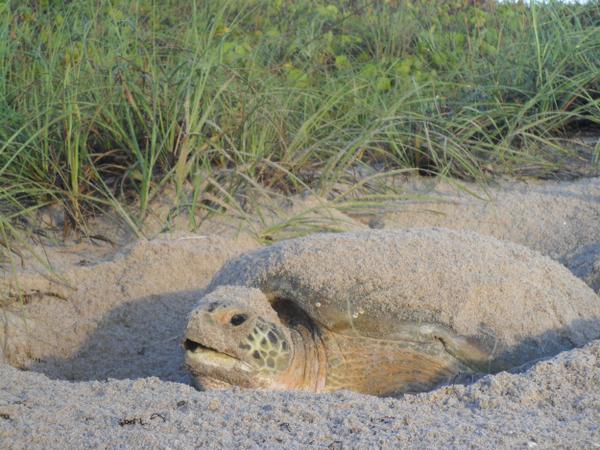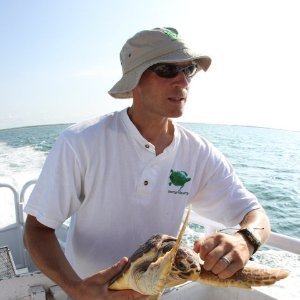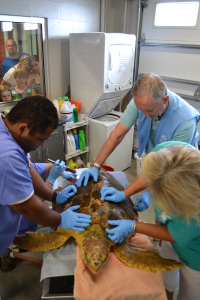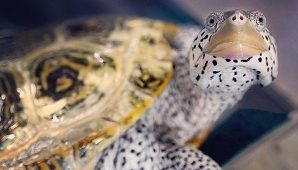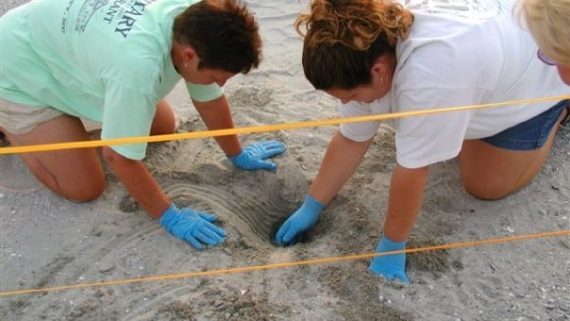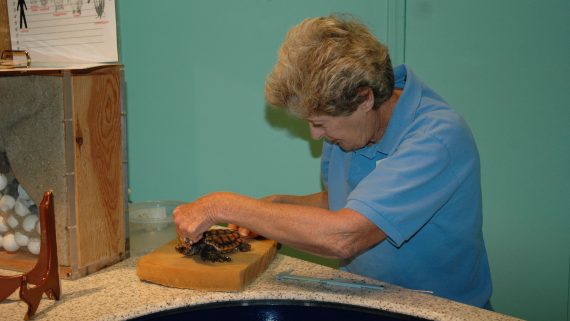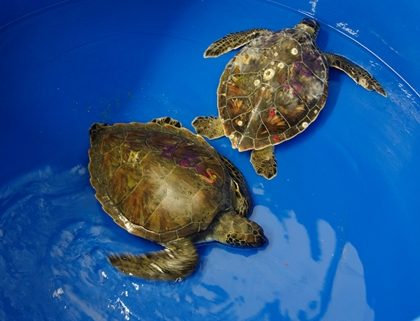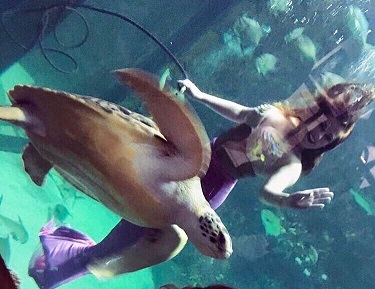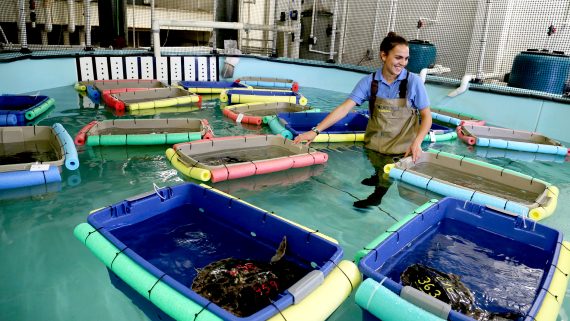North Carolina Sea Turtle Project
This week’s blog post comes from Dr. Matthew Godfrey, Sea Turtle Program Coordinator for North Carolina.
Five sea turtle species are found in North Carolina waters: loggerheads, green turtles, Kemp’s ridleys, leatherbacks and hawksbills (rarely seen in NC). The first four species lay their eggs on sandy ocean-side beaches in N.C., although more than 95% of all nests found in the state are laid by loggerhead sea turtles.
All sea turtles found in NC are considered “Protected Species.” This means these species are listed on the Endangered Species Act as either Endangered (in danger of extinction) or Threatened (likely to become Endangered), and are protected by state and federal law. Every species on the Endangered Species List has a “Recovery Plan,” which is a blueprint for actions necessary to restore the species sufficiently so it can be removed from the Endangered Species List. The Recovery Plan also lists the criteria by which the species can be considered “restored” (no longer in danger of extinction).
In the case of loggerhead sea turtles, the Recovery Plan states that in North Carolina, the loggerhead population will be considered restored when (a) the total number of nests laid annually in N.C. reaches 2000, (b) there is an increasing trend in turtle numbers in the water over one generation (roughly 50 years), and (c) numbers of sick, injured or dead turtles per year does not increase faster than the in-water trend (part b). In North Carolina, most of the information used for assessing these criteria is collected by members of the NC Sea Turtle Project.
The NC Sea Turtle Project has two primary components: a sea turtle nest monitoring and protection program and a stranding and salvage network. More than 1,000 people participate in the Project, and contribute their time as volunteers or collaborators. The nest monitoring and protection program starts each May, when adult sea turtle begin to lay their eggs on sandy ocean-facing beaches in North Carolina. Every day between May and August, nearly every foot of the state’s 330 mile long beach front is checked for signs of newly laid sea turtle nests.
Some of these people do the monitoring as part of their jobs (for instance, park rangers who patrol the state or federal park lands on the coast). Yet, most of them are citizen volunteers, who are keen to participate in the protection of sea turtles and their eggs. Not only do they keep track of when and where the nests were laid, but they also keep an eye on them during the 50-75 day incubation period, to ensure they are protected. When the approximately 120 eggs (average sea turtle nest size in N.C.) is expected to produce hatchlings, many volunteers will sit with the nests during the night. to ensure that the turtles make it safely to the ocean. The volunteers also excavate nests that already have produced hatchlings, to verify hatching success and free any remaining live hatchlings that might be stuck at the bottom.
The sea turtle stranding and salvage network runs all year and is set up to respond to sick, injured or dead turtles found along the coast of N.C. There at two dedicated sea turtle rehabilitation centers in NC: one in Surf City and one in Manteo, plus the NC Aquariums in Fort Fisher and Pine Knoll Shores often help with short-term care of sick or injured sea turtles. In all cases when sick or injured turtles are taken in, the goal is successful rehabilitation and eventual release back into the wild. Many volunteers also work at these facilities.
How are loggerhead sea turtles doing in North Carolina? One of the recovery goals is 2,000 nests laid by loggerhead turtles per year. Based on the past 17 years of data, the overall average in our state is about 750 nests.
Much information about sea turtles in North Carolina can be found online.
For up-to-date numbers of nests laid in NC: www.seaturtle.org/nestdb/?view=1
For information on stranded sea turtles in NC: www.seaturtle.org/strand/summary/index.shtml?program=1
The Karen Beasley Sea Turtle Rescue and Rehabilitation Center in Surf City, NC: www.seaturtlehospital.org
The Sea Turtle Assistance and Rehabilitation Center (STAR Center) in Manteo, NC:
www.nestonline.org/rehab
Sea Turtle Recovery Plans for the US:
http://www.nmfs.noaa.gov/pr/recovery/plans.htm#turtles
Thank you to Dr. Godfrey for all of his hard work protecting our sea turtle. This week the Aquarium’s turtles have continued to grow. Turtle A is 856 grams and 18.0 cm long. Turtle B is 944 grams and 18.5 cm long. For more information on what to do with those numbers, please check out our lesson: Hatchling to Yearling.


